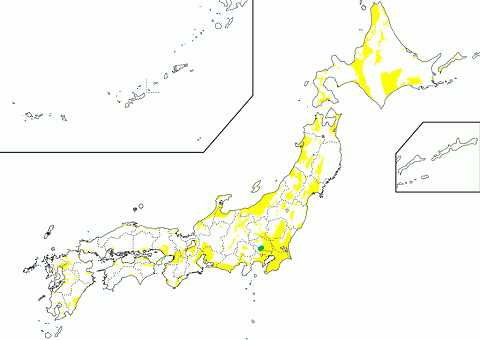Lignite
Biological Process
Synonym
Brown coal
Required Geological Setting
Neogene and Quaternary sediments
Occurrence
Carbon-rich plant fossils of low rank of coal. Plants are mainly composed of aliphatic hydrocarbons such as cellulose and lignin, and the content of oxygen and hydrogen is decreased by diagenesis to be lignite. The rank of coal of lignite is lower and it contains less aromatic hydrocarbons than coals such as bituminous coal and anthracite coal. Lignite is formed by dehydration of plants. The carbon content of lignite is less than 70 % and the water content of lignite is more than 50 weight %. Japanese lignites are generally fossils of metasequoia such as authigenic stumps of trees and allochthonous debris of woods. Lignites usually deposit in siltstones and avoid decomposition. Lignites are rapidly dried and powdered in the air. Lignite is generally produced in the Neogene strata. The island arc of Japan is an exceptional example where lignite is produced in the Quaternary strata only, and the Neogene strata produces bituminous coal. This is considered as a result of higher geothermal gradient in the volcanic island. The Japanese Industrial Standards (JIS) defines lignite as its calorific value is less than 7300 kcal/kg. and fuel ratio (Solid-state carbon/volatile component) is lower than 1.5. Some countries defines brown coal including lignite and sub-bituminous coal whose calorific value is 7300-8100 kcal/kg by JIS. The Japanese mining act defines "Atan" in addition to coal. "Atan" is a kind of lignite having very low calorific value, typically 3000-4000 kcal/kg. The vitrinite reflectance of lignite is less than 0.35 %.

Distribution of lignite described in this site. Yellow is Neogene and Quaternary sediments.